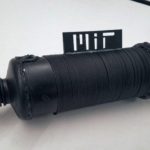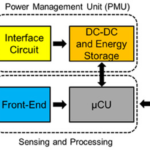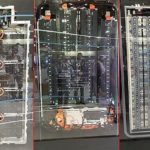Examine a toy with a rechargeable battery and you are likely to find a lithium-polymer cell powering the works. But a new kind of battery architecture called lithium-metal is getting a lot of attention these days because it has a capacity and energy density potentially far exceeding that of lithium-polymer versions. Lithium-metal batteries use lithium metal as their anode unlike lithium-ion batteries lithium plus several other materials form the anode. Over time, some of the metallic lithium becomes electrochemically inactive, forming isolated islands of lithium that no longer connect with the electrodes. This action reduces capacity and is a particular problem for lithium-metal technology and for the fast charging of lithium-ion batteries.

When an island of inactivated lithium metal travels to a battery’s anode and reconnects, it comes back to life, contributing electrons to the battery’s current flow and lithium ions for storing charge until it’s needed. The island moves by adding lithium metal at one end (blue) and dissolving it at the other end (red). Researchers from SLAC and Stanford discovered they could drive the island’s growth in the direction of the anode by adding a brief, high-current discharging step right after the battery charges. (Greg Stewart/SLAC National Accelerator Laboratory)
One recent development aimed at addressing the problem comes from the DoE SLAC National Accelerator Lab. The key problem the researchers addressed was the formation of inactive lithium islands that are cut off from the electrodes, reducing the battery’s capacity to store charge. The research team discovered that by introducing a brief, high-current discharging step right after the battery charges, they could make this “dead” lithium creep like a worm toward one of the electrodes until it reconnects, partially reversing the unwanted process. Adding this extra step slowed the degradation of their test battery and boosted its lifetime by nearly 30%. Researchers published their results in the Dec. 22 issue of the journal Nature.
“I always thought of isolated lithium as bad, since it causes batteries to decay and even catch on fire,” said Yi Cui, a professor at Stanford and SLAC and investigator with the Stanford Institute for Materials and Energy Research (SIMES) who led the research. “But we have discovered how to electrically reconnect this ‘dead’ lithium with the negative electrode to reactivate it.”
The idea for the study arose when Cui speculated that applying a voltage to a battery’s cathode and anode could make an isolated island of lithium physically move between the electrodes. To confirm the idea, the scientists fabricated an optical cell with a lithium-nickel-manganese-cobalt-oxide (NMC) cathode, a lithium anode and an isolated lithium island in between. This test device allowed them to track in real time what happens inside a battery when in use. They discovered the isolated lithium island wasn’t “dead” at all but responded to battery operations. When charging the cell, the island slowly moved towards the cathode; when discharging, it crept in the opposite direction.
“It’s like a slow worm that inches its head forward and pulls its tail in to move nanometer by nanometer,” Cui said. “In this case, it transports by dissolving away on one end and depositing material to the other end. If we can keep the lithium worm moving, it will eventually touch the anode and reestablish the electrical connection.”
The scientists validated the results with other test batteries and through computer simulations. Experimental results also demonstrate how isolated lithium could be recovered in a real battery by modifying the charging protocol. “We found that we can move the detached lithium toward the anode during discharging, and these motions are faster under higher currents,” said Stanford postdoctoral fellow Fang Liu, the Nature article lead author. “So we added a fast, high-current discharging step right after the battery charges, which moved the isolated lithium far enough to reconnect it with the anode. This reactivates the lithium so it can participate in the life of the battery.”






Tell Us What You Think!